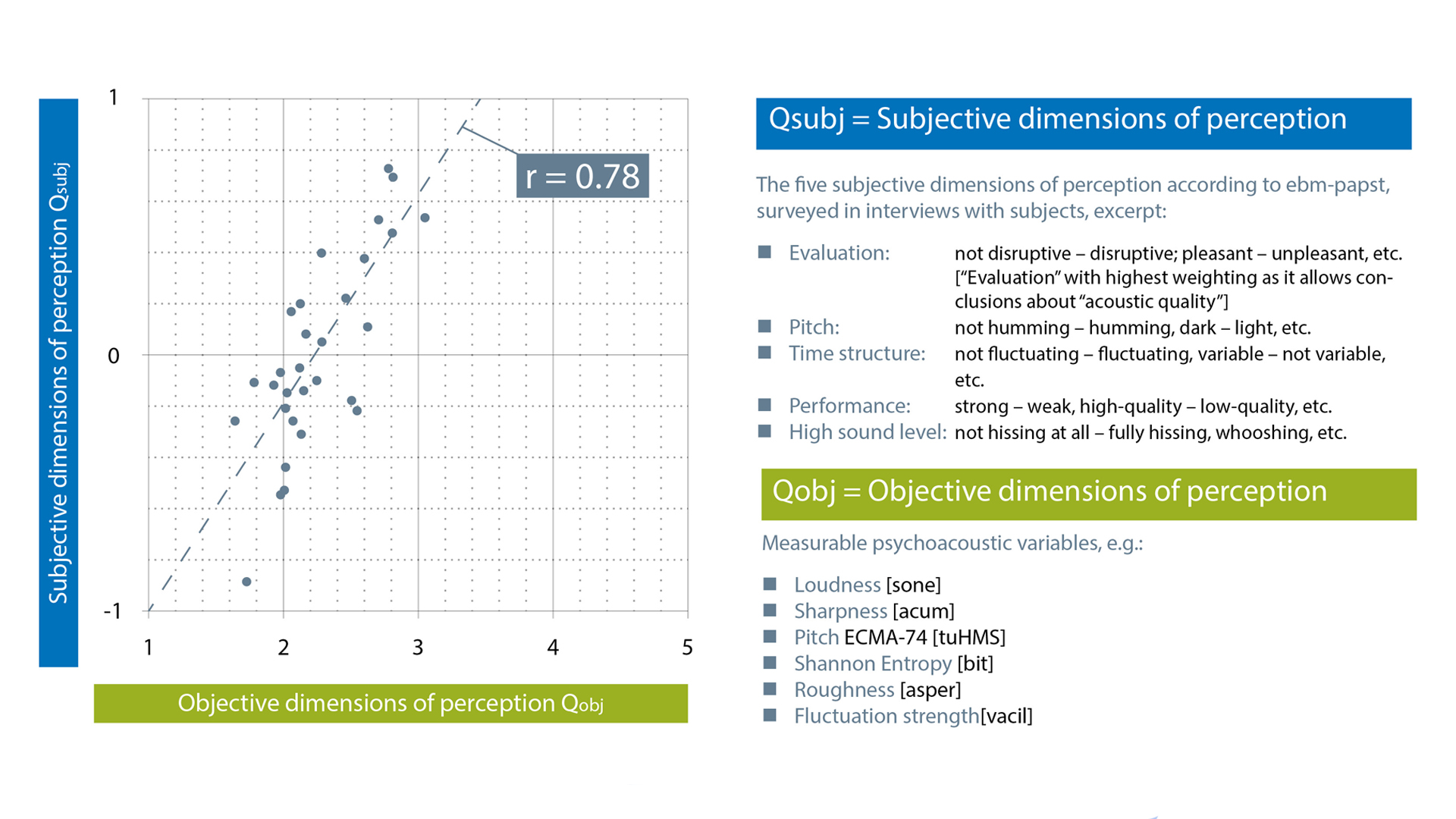WHAT THE TECH?! How do heatpumps work?
Heat pumps can heat and cool homes. They transfer heat from one place to another. You can find out exactly how this works here:
In principle, a heat pump works like a refrigerator, which withdraws heat from the food stored in it and transfers it outside. Air/water heat pumps extract heat from the surrounding air and transfer the heat to the heating system, which warms the living areas or is used to heat water. Fans ensure the necessary external air flow through the device’s evaporator and inevitably generate more or less noise during operation. This also applies to the fans with GreenTech EC motors that are particularly quiet. Where they are installed can also have a negative impact on noise generation. Noise generation always needs to be considered by those who use air/water heat pumps. As a rule, it is not usually sufficient to merely observe the limit values of the local standards and noise protection ordinances.
Psychoacoustics: Why does a noise sound unpleasant?
The values defined in the guidelines and standards, which can be measured on the test stand, have little to do with individual human noise perception. Until now, standards and directives have not adequately dealt with tonality, i.e. the relations between tones. Different psychoacoustic tests are currently looking into this. Psychoacoustics aims to define why we perceive noise as pleasant or unpleasant. For example, trumpet music and an excavator at a construction site have approximately the same measurable sound power, but our psychoacoustic assessment of them is completely different.

Motor and fan specialist ebm-papst studied this issue early on and set up a special psychoacoustics laboratory for test subjects to demonstrate the operating noise of heat pumps and the fans installed in it in various configurations (Fig. 1).
Minimize operating noise of air/water heat pumps
Developers question the subjects afterwards to build up a scientifically founded database, for example based on the following key psychoacoustic parameters: loudness [sone], sharpness [acum], pitch [mel], roughness [asper] and fluctuation strength [vacil]. In addition, tonality and stimulus are also significant variables. Tonality is present when single tones are noticeable within a noise, which increases the interference effect. Noises that contain rapid changes in level, e.g. knocking or ramming noise, are identified with impulsiveness.
The results from the psychoacoustics laboratory are incorporated into fan development.
Both impulsiveness and tonality can be measured with microphones and compared with the test subjects’ statements. Assessments by the test subjects are analyzed using statistical and psychological methods. The results are incorporated into in-house fan development, but also provide information about the tested air/water heat pumps and which fans are best suited to the individual installation scenario. Ultimately, the aim is to ensure that the operating noise of a high-quality heat pump that is already very low is perceived as pleasant by the widest possible group of test subjects.
Metric for psychoacoustic evaluation
Research on psychoacoustics is in full swing and we can look forward to more results. As part of a doctoral thesis carried out at ebm-papst, for example, it has already been possible to develop a metric, which is now used for psychoacoustic evaluation in the end device.
ebm-papst acoustic quality model
ebm-papst also examines fans in installation scenarios from a psychoacoustic point of view and has developed its own metric for acoustic quality. For this purpose, subjective dimensions of perception with measurable psychoacoustic variables (objective dimensions of perception) are brought into play. The closer the correlation coefficient r is to 1, the more suited the model to depicting the subjective aspects of perception through objective (measurable) ones. The acoustic quality Q, which then represents the fan’s perceived noise, should be as high as possible. (Grafic | ebm-papst)
The aim of this metric is to create a correlation between the subjective perceived noise quality, which presents itself in different “dimensions”, and objectively measurable variables. During the extensive hearing tests carried out, different dimensions of perception were compared to one another and to physical measured values. A total of 123 test subjects between the ages of 19 and 60 were played 89 sounds in three series of experiments in realistic conditions.

For each series of experiments, 30 to 40 of these test subjects assessed the noise recorded (Fig. 2) in terms of performance (slow/strong, high-quality/low-quality), sound level (hissing or whooshing), time structure (fluctuating), quality (pleasant/disruptive) and pitch (humming, dark/light). In addition, different noises were directly compared and noises were checked against one property for a rating scale.
Quieter heat pumps thanks to psychoacoustics
Additional interviews from the test subjects revealed that the noise characteristics dark, deep, slow, monotone, consistent, soft and light were considered pleasant. On the contrary, rattling, fluttering, clashing, dripping, humming, changing, high, bright and hissing properties were considered unpleasant. Overall, it was quite acceptable for the test subjects that operating noise was generated, but they must be perceived as pleasant. Finally, however, the evaluation of the hearing tests showed above all that the “disturbance level” can be largely combined with objective psychoacoustic parameters.

Based on this, two follow-up objectives can now be defined: In future, the aim is to also use psychoacoustics in addition to the physical parameters for assessing noise in fans (Fig. 3). The aim is also to work towards the introduction of an international standard based on standardized psychoacoustic variables. This would then be an important prerequisite for ensuring that air/water heat pumps with as pleasant an operating noise as possible help to avoid any nuisance in the neighborhood due to noise pollution.



Leave a comment